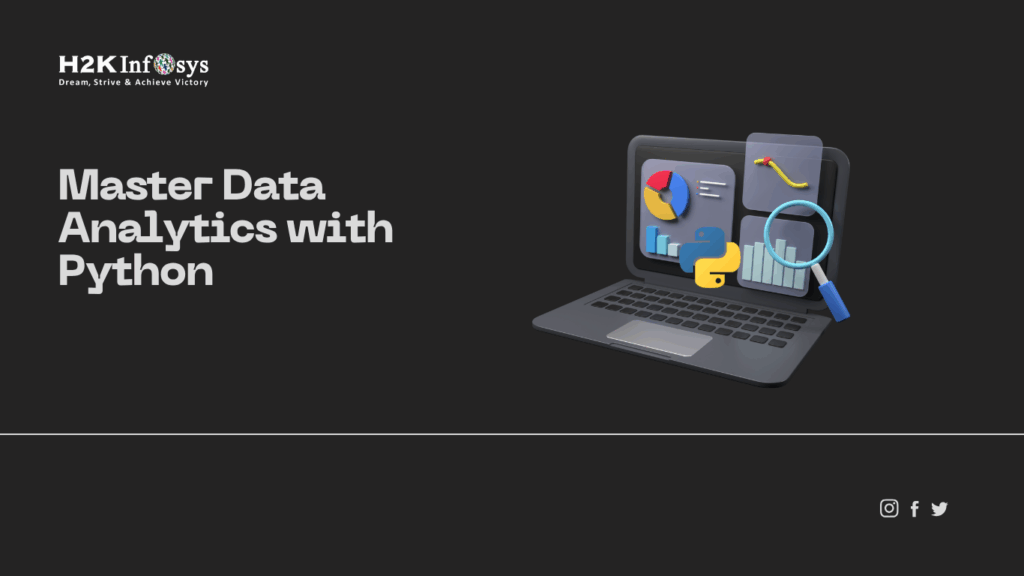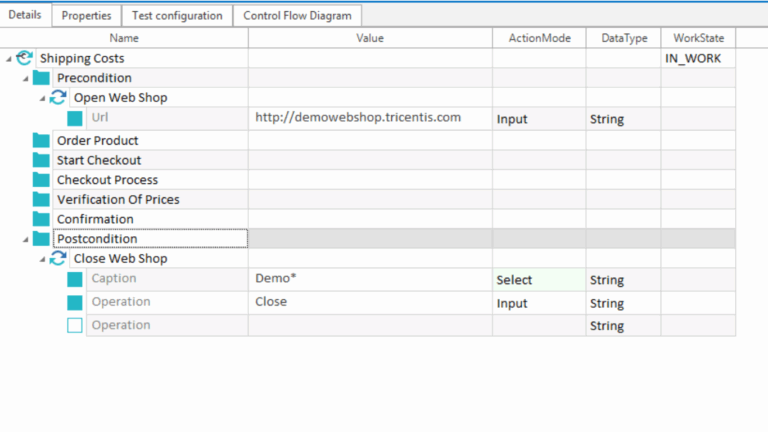The choice of software testing technique for a project leads to a successful testing. The software testing is no more conducted as a random process. With the development of the IT standards, the well organised and structured procedures, tools, techniques, documentation have been identified and standardised for software testing. The software testing is carefully planned to organise and conduct the testing. A successful software testing ensures the delivery of failure proof software.
The software testing techniques are also evolved to meet the requirements of testing variety of software. The various factors taken into account to choose the testing technique are:
- Type of software. Software testing is context dependent. There are commercial softwares, safety critical software, and so on. The testing technique is chosen to suit the scenario of the system type.
- Complexity of the software. The software complexity can vary based on the purpose of the software for which it is developed. A simple software for marketing services and products include few pages, a complex software can include complex functionalities involving high level calculations and precision.
- Risk. Certain software like software for spacecraft, safety critical system are high risk based systems which can lead to loss of property and life of human. The types of risk involved can also vary along with the risk levels.
- Budget and time. The clients may come with various budget and time constraints for the projects. The software testing technique has to be chosen appropriately. The experience based software testing techniques are usually employed for projects with budget and time constraints.
- Development approach. The software development life cycle model is also considered to choose the software testing technique. The SDLC model like agile requires a software testing technique that can respond to quick and frequent development scenarios.
The various other factors considered are standards, customers requirements, project objective, tester skills, software purpose and so on. The software testing techniques can be white box testing techniques to test at program level and black box testing techniques to test the behavior.
Check your understanding:
- List down any other factors that can affect the choice of software testing technique.






















85 Responses
White box testing technique
Black box testing technique
Experience based testing technique
1.White Box Testing technique: The structure of the software is used to derive the test cases.This testing is done basically at programming level. Developers perform the white box testing usually on the development platform.
2.Black Box Testing technique:In this testing The specifications of the software requirements are used to prepare the test documents. The system behavior is tested by software testers.
3.Experience based Testing technique:The experience based techniques depend on the knowledge, skills and experience of the testers, developers and stakeholders in the team. This kind of techniques are employed either to prepare for the testing or when there is less duration for the testing.
The choice of software testing techniques should be standardized for software testing. The other factors that can affect the choice of software testing techniques are standards, customer requirements, project objective, tester skills, software purpose and so on. The software testing techniques can be white box testing techniques to test at program level and black box testing techniques to test the behaviour.
The other factors are standards, customers requirements, project objective, tester skills, software purpose and so on. The software testing techniques can be white box testing techniques to test at program level and black box testing techniques to test the behavior.
List down any other factors that can affect the choice of software testing technique.
• Requirements of client – Sometimes a client may demand a specific testing technique for his product.
• Type of system used by the program – The type of system (e.g. embedded, graphical, financial, etc.) will influence the choice of techniques. For example, a financial application involving many calculations would benefit from boundary value analysis.
• Guidelines prescribed by the industry – All industries have internationally-accepted regulatory standards or guidelines that govern the testing techniques used.
• Sufficiency of documentation – What type of testing documentation exists for a product; in what form it exists and whether it is updated or not, influence the choice of testing technique. The content and style of the documentation will also influence the choice of techniques.
• Objective of the test – Objective of a test can be detection of a particular ‘bug’ in the product through the test; verification and validation of the product; gaining confidence that the product will be able to cope with typical operational tasks. Objective of the test will determine which technique is best suited. For example, a software product meant to be used by the handicapped should be tested for accessibility.
• Models used in developing the system – Since testing techniques are based on models used to develop that system, they will to some extent govern which testing techniques can be used. If the specification contains a state transition diagram, state transition testing would be a good technique to use.
• Experience of the tester – Choosing the right testing methodology is a matter of experience. A knowledgeable and experienced tester can accurately decide the testing technique suitable for a program. This will help developer and vendor to save up on time and money.
• Need for flexibility – A project might require some modifications along the way so it would require a testing methodology which has ample flexibility. Some testing models like the Waterfall and V model have little flexibility. Agile model has most flexibility.
Ans: Any other factor are:
– Testing Knowledge & experience
– Sufficiency of documentation
– Requirement of client
– Type of system used by the program.
– Time & budget constraints.
– Objective of the test
– Software development lifecycle
– Models used in developing the system.
Other factors affect the choice of software testing techniques are
1. team structure i.e if the team working in the project are located in different geographical locations then testing will be delayed.
2. functional specification documentation should be clear enough to design the program
The software testing techniques are test planning, test design, test execution and test closure.
I can think of one factor than can affect the choice of software testing technique, which is available human resource. The IT team may or may not have experts in manual of automation testing and due to budget and/or time constraints, new resource intake might not be possible.
The various other factors that can affect the choice of software testing technique are:
*Requirements of clients
*Environments of the software
-Additional requirements from project owner
– Number of users
-amount of information contained on the site
The software testing technique is dependent on the types of software, complexity of the software, budget and time constraints, risk and development approach.
There are other factors too that affect the choice of software testing technique like client requirement, the main objective of the project, skills of the testers and purpose of the software.
The various factors taken into account to choose the testing technique are:-types , compatibility , risk, budget and time and developmental approach.
The other factors that can affect the choice of software testing techniques are : types of different operating systems, the knowledge and experience of the tester to execute and find defects, security risks, customers requirements, software purposes, etc.
Requirements of client – Sometimes a client may demand a specific testing technique for his product.
Guidelines prescribed by the industry – All industries have internationally-accepted regulatory standards or guidelines that govern the testing techniques used.
Sufficiency of documentation – What type of testing documentation exists for a product; in what form it exists and whether it is updated or not influence the choice of testing technique. If the testing documentation exists and is updated it is of great help in deciding the best course of action for the tester. The content and style of the documentation will also influence the choice of techniques (for example, if decision tables or state graphs have been used then the associated test techniques should be used).
Need for flexibility – A project might require some modifications along the way so it would require a testing methodology which has ample flexibility.
Other factors that can possibly affect the choice of testing may be the technology used for developing the application, Whether the application is for a service oriented or a product oriented client , the size of the business etc
There are few other factors that can affect the choice of software testing techniques. Need for flexibility – A project might require some modifications along the way so it would require a testing methodology which has ample flexibility. Some testing models like the Waterfall and V model have little flexibility. Agile model has most flexibility. Guidelines prescribed by the industry – All industries have internationally-accepted regulatory standards or guidelines that govern the testing techniques used. The chosen testing technique should fulfill all these requirements.Requirements of client – Sometimes a client may demand a specific testing technique for his product.
THE other factors that can effect are:-
1.software application size
2.software life cycle
3.process maturity
4.time,skilled team, team and work relationships, test results.
Ans:
The other factors that can affect the choice of software testing techniques are specification, planning, analysis, maintenance, requirements of clients, software application size,team and work relationship, skilled team and process flexibility.
The other factors that can affect the choice of software testing technique are customer requirements ,tester skills ,kind of users ,planning ,design, implementation ,security feature of the software and so on.
The other factors that can affect the software technique type are:
1.Type of software application: Techniques are choosen related to application type, mainly domain of the application like finance, social media, healthcare and so on..
2. Regulatory standards: Regulatory standards are common testing standards approved internationally. Selection of techniques, also depends upon the standard of testing that is followed in the IT industries.
3. Customer requirements: Sometimes customers may not provide any requirements, in such cases yo have to choose the experienced based approach.
4. Test objectivs: Test objectives are important aspects that gives a clear idea about the scope of the testing activities.
5. Documentation or requirement: Selection of techniques depends upon the availability of documents like requirement document, analysis report, design document etc.
6. Previous experience on types of defects tracked: This is kind of user experience on defects that had faced in testing life cycle. Further, he/she can replicate the same situation and catch the defects encountered previously, from their experience. this is also a type of experience based technique.
Other factors that can affect the choice of the software are the testing models. The waterfall model does not allow the team to correct the steps in the cycle and instead cause the project to start from scratch. The requirements and analysis can affect the testing due to errors in documentation. Errors in documentation could lead to several defects in the system.
Other factors that can affect the choice of software testing technique :Since a project team is a team, solid relationships, reliable execution of agreed-upon commitments and responsibilities and a determination to work together towards a common goal are important. This is especially important for testing, where so much of what we test, use, and produce either comes from, relies upon or goes to people outside the testing group. Because of the importance of trusting relationships and the lengthy learning curves involved in software and system engineering, the stability of the project team is an important people factor, too.
Again the test results themselves are important in the total amount of test effort during test execution. The delivery of good-quality software at the start of test execution and quick, solid defect fixes during test execution prevents delays in the test execution process. A defect, once identified, should not have to go through multiple cycles of fix/retest/re-open, at least not if the initial estimate is going to be held to.
The other factor when choosing the right testing technique is the need for flexibility. Some projects may need modifications or changes in the middle of the testing based on the requirements of the clients. It could happen that client wanted to change some of those requirements. Agile for example has more flexibility.
Other factors while choosing software testing technique can be customer requirements, objective of the project, scope- as to how much testing can be done, number of test cases to be executed.
Other than mentioned above article one factor is if any changes in the software appears in the middle of project choice of software testing technique will affect and another one is before the deadline if they need to release the software they may use different testing technique to make the testing even faster.
Other factors that can affect the choice of software testing technique are available resources, time required to train testers for new software, number of testers available to test, etc.
Other factors can affects the software testing techniques like how may tester are in the team to execute the testing, Whether testers are trained or not, Project’s deadline etc.
Software testing techniques are measured and chosen by Test Lead. Test Leaders decides what type of testing to choose as per the project.
Other factors that can affect the choice of software testing technique
The test strategies or approaches we pick will have a major influence on the testing effort.
changes in client requirement.
The knowledge and experience of the tester to execute and find defects.
Environment of the software .
I can think of one factor than can affect the choice of software testing technique, which is available human resource. The IT team may or may not have experts in manual of automation testing and due to budget and/or time constraints, new resource intake might not be possible.
The other factors that can affect the choice of software testing technique are the changes in client requirements, need for training to testers and developers for new software testing, changes in project timeline.
Other factor which could affect software technique could be planning, documents, tester skills, change in requirement.
The other factors that can affect the choice of software testing techniques are
1. client is not clear with requirements and changes frequently.
2. Client wants to change in requirements in middle of the project, so IT team again do documentation for the project and need to change the process.
3. If there is time constraint for completing the project.
4. Developers need to learn new technology according to client requirements.
5. Limited resources
The other factors that can affect the choice of software testing techniques are specification, planning, analysis, maintenance, requirements of clients, software application size, team and work relationship, skilled team and process flexibility.
List down any other factors that can affect the choice of software testing technique.
* Clarity of the initial requirements
* Accurate initial estimation of costs and development time
* Incorporation of requirements changes during the development process
* Obtaining functional versions of the system during the development process
* Software criticality
* Development costs
* Length of the delivery time of the final system
* System complexity
* Communication between customers and developers
* Size of the development team
-Assessment of the risk involved: The greater the risk the more thorough testing is required. Example: Medical and Financial sectors are high risk areas.
-Requirements by client: client might ask for specific testing technique for his product.
-Types of system used by the program: The type of the system (embedded, graphical, financial, etc) will influence the choice of techniques. Example: A financial application involving many calculation would benefit from boundary value analysis.
-Time and budget constraints: with more time available, then different testing technique can be afforded but when time is limited then testing technique can be used to find most important defects.
-Guidelines approved by industry: It’s important to follow internationally-accepted regulatory standards or guidelines.
-Sufficiency of documentation: having a good documentation can influence the technique being chosen for testing and also the content and style of the documentation can influence the choice of technique.
-Objective of the test will determine which technique is best suited. For example if software being used by handicapped how accessible it is.
-SDLC: each stage of development life cycle requires different testing techniques. For example a sequential life cycle model will lend itself to the use of more formal techniques where is an iterative life cycle model maybe better suited to using an exploratory testing approach.
-Experience of the tester: a knowledgeable and experienced tester can accurately decide the testing technique suitable for a program.
other factors that can affect the choice of software testing technique
• Budget
• Client requirements
• Organization usage
• Skilled & experienced testers
• The technology used to develop the application
The choice of software testing methods can depend on software type, complexity, risk, budget, time and development approach.
1. Assessment of the risk involved – The greater the risk involved the greater the need for more thorough testing.
2.Requirements of client – Sometimes a client may demand a specific testing technique for his product.
3.Type of system used by the program – The type of system (e.g. embedded, graphical, financial, etc.) will influence the choice of techniques.
4.Time and budget constraints – Ultimately how much time there is available will always affect the choice of testing techniques.
5.Guidelines prescribed by the industry – All industries have internationally-accepted regulatory standards or guidelines that govern the testing techniques used.
6.Sufficiency of documentation – What type of testing documentation exists for a product; in what form it exists and whether it is updated or not influence the choice of testing technique.
7.Objective of the test – Objective of s test can be detection of a particular ‘bug’ in the product through the test; verification and validation of the product; gaining confidence that the product will be able to cope with typical operational tasks.
8.Software development lifecycle – Testing is an ongoing process. Each stage of application development demands different type of testing technique.
9.Models used in developing the system – Since testing techniques are based on models used to develop that system, they will to some extent govern which testing techniques can be used.
10.Experience of the tester – Choosing the right testing methodology is a matter of experience.
11.Need for flexibility – A project might require some modifications along the way so it would require a testing methodology which has ample flexibility.
Requirements of client: Sometimes a client may demand a specific testing technique for his product.
Type of system used by the program: The type of system (e.g. embedded, graphical, financial, etc.) will influence the choice of techniques
Guidelines prescribed by the industry: All industries have internationally-accepted regulatory standards or guidelines that govern the testing techniques used. The chosen testing technique should fulfill all these requirements.
Sufficiency of documentation: What type of testing documentation exists for a product; in what form it exists and whether it is updated or not influence the choice of testing technique.
Experience of the tester: Choosing the right testing methodology is a matter of experience. A knowledgeable and experienced tester can accurately decide the testing technique suitable for a program.
1. List down any other factors that can affect the choice of software testing technique.
1. Requirements of client – Sometimes a client may demand a specific testing technique for his product.
2. Guidelines prescribed by the industry – All industries have internationally-accepted regulatory standards or guidelines that govern the testing techniques used. The chosen testing technique should fulfill all these requirements
3. Sufficiency of documentation – What type of testing documentation exists for a product; in what form it exists and whether it is updated or not influence the choice of testing technique
4. Need for flexibility
5. Objective of the test
6. Software development lifecycle – Testing is an ongoing process. Each stage of application development demands different type of testing technique
List down any other factors that can affect the choice of software testing technique.
The other factors that can affect the choice of software testing techniques are
.Documentation or requirement, Testers skill and knowledge, Application development life cycle & Test objectives
The other factor which affects software techniques are client requirement,analysis, test design, type of system used by the program, skills etc
The other factors are standards, customers requirements, project objective, tester skills, software purpose and so on. The software testing techniques can be white box testing techniques to test at program level and black box testing techniques to test the behavior.
The other factors that affects the choice of software testing tecniques are – Guidelines by the industry, sufficient documents, Experience and knowledge of the tester, need for flexibility and so forth.
List down any other factors that can affect the choice of software testing technique.
Factors affecting software testing techniques are:
Type of software- whether it is a commercial software, safety critical software etc
Complexity of the software- marketing services and products require only simple software whereas complex softwares are required when there is a high level of calculations and precision.
Risks – Spacecrafts are safety critical systems wherein the risk of failure is high.
Budget and time-The clients may not have enough budget and time for the project.
SDLC – Each stage of application development demands different types of software testing techniques.
Flexibility- There May be frequent change in requirements or modicafications need to be done. So testing technique which have ample flexibility should be chosen.
Sufficiency of documentation – Does the Testing documentation exist? What type of testing documentation is it ? Whether it need to be updated or not? The style and content of testing documentation Are factors which influence the software testing techniques.
Factors affecting the choice of testing types are:
Extent of documentation : while extensive and meticulous documentation is desirable, it may take more time. so based on time and budget, this may be constrained.
SDLC choice – Agile software development calls for frequent and iterative development and testing.
Budget and deadline: Time and budget are perhaps the most major factors in estimating the extent and type of testing
tools and resources: availability of tools and cost involved with purchasing the license may be another issue that affects testing choice.
Documentation:In Product factors the presence of sufficient project documentation is important so that the testers can figure out what the system is, how it is supposed to work and what correct behavior looks like. This will help us do our job more efficiently.
Process maturity, including Test process maturity, is another factor, especially the implication that mature processes involve carefully managing change in the middle and end of the project, which reduces test execution cost.
Time pressure :Time pressure is another factor to be considered. Pressure should not be an excuse to take unwarranted risks. However, it is a reason to make careful, considered decisions and to plan and re-plan intelligently throughout the process.
Factors that can affect the choice of software testing technique.
– Improper Documentation
– Unskilled Team
– Customer’s requirement etc
Some other factors that can affect the choice of software testing technique are availability of tools and resources with appropriate licenses, the experience and skills of the IT project team, the amount of additional training those members may need, the need and demand for the software in current market.
List down any other factors that can affect the choice of software testing technique.
The other factors that affect the choice of software testing technique are
1. Regulatory standards
2. Level and type of risk
3.Test Objectives
4.Requirement
5.Tester’s Knowledge and Skills
6. Application Development Life cycle
7. Previous experience on types of defects tracked
The other factors that can effect the software testing are project objective ,customers requirements , tester skills , software purpose etc.
1. List down any other factors that can affect the choice of software testing technique.
The main factors that are taken into account in order to choose the appropriate testing technique include; Type of software, Complexity of the software, Risk, Budget and time, and Development approach
Other factor that can affect the choice of software testing technique:
1.Customer requirement: Selection of techniques can be based on the customer requirements.
2.Documentation or requirement: Selection of techniques depends on the availability of test documents like requirement document, analysis report, design document report.
3.Test objectives: Test objectives are important aspects that give a clear idea about the scope of the testing activities. Based on that , you can select appropriate techniques.
Other factors that can affect the choice of software testing technique are-
Budget and deadline: Time and budget are perhaps the most major factors in estimating the extent and type of testing.
Tools and resources: availability of tools and cost involved with purchasing the license may be another issue that affects testing choice.
Documentation:In Product factors the presence of sufficient project documentation is important so that the testers can figure out what the system is, how it is supposed to work and what correct behavior looks like. This will help us do our job more efficiently.
Apart from the factors mentioned in the article few other factors that can affect software testing techniques are:
Type of software, Complexity of the software, type of system used by program, guidelines prescribed by the industry, sufficiency of documentation, objective of the test, models used in developing the system and experience of the tester.
4)The factors taken into account to choose the testing technique are:
Type of software means to test whether it suits the testing technique.
the complexity of software varies based on the purpose of the software for which it is developed.
certain software like software for spacecraft, safety-critical system is risk-based systems which can be loss of property and life of a human.
There may be budget and time constraints too.
There may be a software testing technique that can respond to quick and frequents development techniques.
Various factors can affects the choice of software testing. Besides obvious reasons mentioned above, the choice of software testing can also depends on the knowledge of project manager who is responsible for choosing the method. Skill of the developer and prior experience of using similar type of methods depending on the projects.
Factor that could affect the software technique
Planning: Planning in software testing is very essential. Quality assurance process relies on many aspects including the estimation and planning
Size And Complexity: Complex and large-scale projects have a number of features that require more skills and time for testing.
Documentation: Detailed testing documentation may improve QA services as it helps to understand better how the product should work and make acceptance simpler.
Skills : QA is closely connected with production that is why skill are the team are very important.
1.Regulatory standards – Regulatory standards are common testing standards approved,
internationally. Selection of techniques, also, depends on the standard of testing that is followed
in the IT industries.
2.Customer requirements – Selection of techniques is also, based on the customer requirements
(sometimes they do not provide any requirement, in such a scenario you have to choose the
experience based approaches). The techniques may vary, based on the customer requirements.
3.Level and type of risk – Based on the risk during the quality analysis phase, you have to choose
the right techniques. Risks may include lack of requirement, equipment or anything similar that
affects the quality. There can be both, high-level and low-level design techniques.
4.Test objectives – Test objectives are important aspects that give a clear idea about the scope of
the testing activities. Based on that, you can select appropriate techniques.
5.Documentation or requirement – Selection of techniques depends on the availability of test
documents like requirement document, analysis report, design document etc.
6.Tester’s skill and knowledge – This factor is quite significant and plays a pivotal role in the
selection of experience-based technique. The knowledge of the tester, his/her perception of the
application and experience on test execution, to figure-out the defects, help to make the product
a quality one.
7.Application development life cycle – The application development life cycle has different
stages, parallel to testing stages. Different stages of development and testing require different
techniques.
8.Previous experience on types of defects tracked – This is kind of user experience on defects
that he/she had faced in testing life cycle. Further, he/she can replicate the same
situation and catch the defects, encountered previously, from his/her experience. This is, also, a
type of experience based technique.
Other factors that can affect the choice of software testing technique:
-Regulatory standards:
These are common testing standards approved, internationally. Software testing techniques selection also depends on the standard of testing that is followed in the IT industries.
-Previous experience on types of defects tracked:
This is a type of experience based technique. Tester can replicate the same situation in testing life cycle and catch the defects, encountered previously from user experience.
Other factors in the decision could include what the client is looking for, what the QA team knows how to use, which techniques are quickest to use in order to meet time constraints, and how much documentation is wanted.
Other factors that can affect the choice of software testing technique
The test strategies or approaches we pick will have a major influence on the testing effort.
changes in client requirement.
The knowledge and experience of the tester to execute and find defects.
Environment of the software .
Other factors that can affect the choice of software testing technique:-
Customer requirements
Skills of QA tester and developer
Software and developer skills
Software environment
Budget and deadline
List down any other factors that can affect the choice of software testing technique?
Android.
App Development Cost.
Artificial Intelligence.
Events.
Insights.
The other factors that can affect the choice of software testing technique are:
-Client requirements
-Environment of testing
-Testers skills
-project objective
-software purpose
List down any other factors that can affect the choice of software testing technique.
1.Time and budget constraints
2.Skills of the tester and developer
3.frequent changes in requirements
4.communication
5.test environment.
1. List down any other factors that can affect the choice of software testing technique.
– Client Requirements/Expectations
– Time & Budget Constraints
– The experience of the tester
Factors that can affect the choice of software testing technique are as follows ; Errors, Risk and Time ,Industry requirements, Client requirement etc.
Factors that affect the choice if the software testing technique
Communication
budget
Error
Requirements of a client
Documentation
Risks
1. List down any other factors that can affect the choice of software testing technique.
* type of software
*risk
* Budget and time
* Customer requirements
* Standards
1. List down any other factors that can affect the choice of software testing technique.
The other factors that affect the choice of software testing technique are following
How any users using the software.
Requirements of the clients.
Budget and Time.
Complexity of the software.
4. Factors that can affect software testing technique includes
resources
team/skillset
defects
time
results
4. Factors that can affect the software testing techniques is team, time, client’s change of requirements, issues with testing, and etc.
considerable factors affecting software testing?
Planning, Time, Size & Complexity, Documentation, Skills, Team interaction, Methodology, Trends.
List down any other factors that can affect the choice of software testing technique.
The choice of software testing techniques should be standardized for software testing. The other factors that can affect the choice of software testing techniques are 1.customer requirements
2. Project objective
3. Tester skills
Other factors that can affect the choice of software testing technique:
1) Documentation.
2) Skills of the team.
3) Management issues.